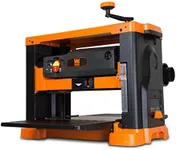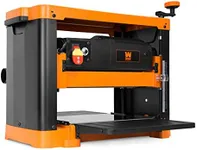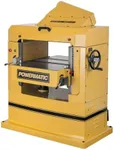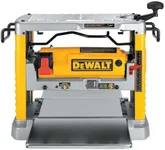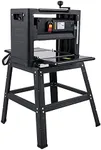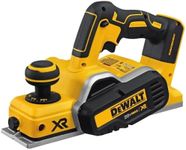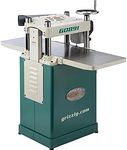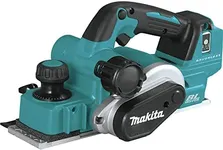Buying Guide for the Best Moulding Planer Machines
Choosing the right moulding planer machine can significantly impact the quality and efficiency of your woodworking projects. These machines are essential for shaping and smoothing wood, and selecting the right one involves understanding various specifications that determine their performance and suitability for your needs. Here are some key specs to consider when picking a moulding planer machine.Motor PowerMotor power is measured in horsepower (HP) and determines the machine's ability to handle different types of wood and the speed at which it can operate. Higher horsepower means the machine can handle harder woods and larger volumes of work more efficiently. For hobbyists or small projects, a machine with 1-2 HP might be sufficient. For professional use or larger projects, consider machines with 3 HP or more.
Cutting WidthCutting width refers to the maximum width of wood the machine can handle in a single pass. This is important because it affects the size of the wood pieces you can work with. Machines with a cutting width of 12-15 inches are suitable for most home projects, while widths of 20 inches or more are better for professional or industrial use.
Feed RateFeed rate is the speed at which the wood is fed through the machine, usually measured in feet per minute (FPM). A higher feed rate means faster processing but can also affect the smoothness of the finish. For detailed and fine work, a lower feed rate (around 20-30 FPM) is preferable. For bulk processing, a higher feed rate (40 FPM or more) is more efficient.
Number of BladesThe number of blades in a moulding planer machine affects the smoothness and quality of the finish. More blades generally mean a finer finish and faster cutting. Machines with 2-3 blades are common for general use, while those with 4 or more blades are ideal for high-quality, professional finishes.
Dust CollectionDust collection is crucial for maintaining a clean workspace and ensuring the longevity of the machine. Effective dust collection systems can prevent clogging and reduce health hazards. Look for machines with built-in dust ports or compatibility with external dust collection systems. For small workshops, a basic dust port may suffice, but larger operations should consider advanced dust collection systems.
AdjustabilityAdjustability refers to how easily you can change settings like cutting depth and feed rate. This is important for achieving precise results and accommodating different types of wood. Machines with easy-to-use adjustment features are ideal for beginners, while more advanced users might prefer machines with finer control options.
Build QualityBuild quality encompasses the materials and construction of the machine, affecting its durability and stability. Machines made from high-quality metals and sturdy construction will last longer and perform better. For occasional use, a machine with decent build quality might be sufficient, but for heavy-duty or professional use, invest in a machine with superior build quality.

